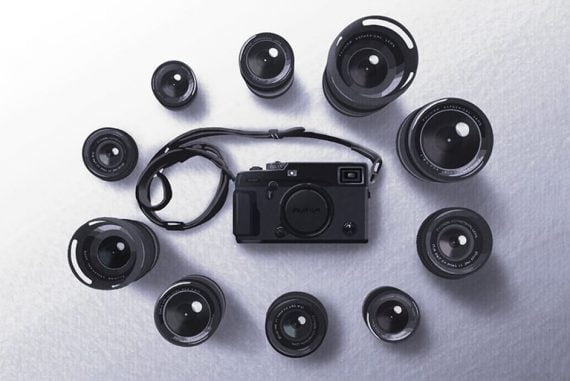
Fujifilm X-T2 Camera Review
In depth review of the Fuji X-T2 mirrorless camera. See how the Fuji X-T2 fares in wedding, portrait, street, sports and concert photography on Shotkit.
This is a guest review of the Fujifilm X-T2 by photographer Jonas Rask.
The Fuji X-T2 is one of the most eagerly awaited Fujifilm X-series cameras to date, and what follows is an in-depth review of the Fuji X-T2 which challenges the camera in various photographic scenarios.
Hopefully this detailed review of the Fuji X-T2 will give you a well-rounded opinion of what is capable with this incredible camera. Over to you, Jonas.
[UPDATE 2019: Fujifilm X-T3 Review]
Fujifilm X-T2 Review Summary
The X-T2 is a feature-packed mirrorless camera with an incredible dynamic range, impressive burst mode, and an autofocus that will never let you down. It offers considerable improvements over its predecessors, and maintains its worthiness in the Fuji lineup even after the release of successive models.
Introduction to the Fuji X-T2
I firmly believe that the popularity of the Fuji X-T1 took Fujifilm by surprise. It was, and still is, the camera that really brought Fujifilm onto the radar of professional photographers who wanted a primary or secondary mirrorless system.
Just by looking at the formfactor, it is obvious that the X-T line caters to the more DSLR/SLR savvy photographers.
And now it’s time! A mere 6 months since the Fuji X-Pro2 marked the update to Fujifilm’s rangefinder line – Fujifilm announces the Fuji X-T2!
I have been so fortunate as to have been testing the Fujifilm X-T2 since mid-April, producing images for Fujifilm for use in the campaign, giving feedback, and really just putting the X-T2 through its paces.
I had no doubt in my mind when I first saw, and handled it, that this camera was Fujifilm’s real stab at the working photographer’s camera. And I can without any hesitation say, that they succeeded in almost every aspect!
Let’s get a few things in place before I proceed with my writeup. Yes, I’m an official X-Photographer. No, I don’t get paid to write this, but yes I do get early access to the gear. Does this make me biased as hell? You bet!
This writeup will be all about my way of using the camera. It will be my subjective thoughts. My interpretations. Nothing more. Alright, now let’s get going.
I have never really liked the look of the faux-SLR hump that Fujifilm X-T1 and other mirrorless brands use. I always preferred the rangefinder look. Hence I was very hesitant in buying into the X-T system. This still hasn’t changed.

But that being said, the layout offers a much more refined workflow. So I have really come to appreciate the camera as a workhorse. The interface simply suits the working photographer MUCH better.
I had a lot of thoughts when conceptualising what I wanted to do with this review of the Fujifilm X-T2. I have been throwing myself into a multitude of different photographic disciplines trying to fit the X-T2 into the specific workflow of that particular photographic sub-speciality.
Let me tell you that right away, that this was NOT an easy task! – But I did my very best, and hopefully this will show you the incredible versatility of the Fujifilm X-T2.
But first let me take you through some of the new, more technical, things the X-T2 has to offer. I know this will end up very gear-headed and geeky…. but since I’m a complete gear-nut myself, this is unavoidable
DISCLAIMER: Please note that all the images in this review have been shot with a prototype of the Fuji X-T2. All images have been edited in Lightroom CC.
Fuji X-T2 Specifications
1. Build
Let’s start with the dials on the Fuji X-T2. The shutter speed and ISO dials now have “click/declick” locks, instead of the inhomogeneous locks on the X-T1. And it just works. Finally!
The exposure compensation dial is very firm to turn, and it has been placed just a couple of millimeters inside the edge of the camera, so you will not accidentally turn it! Perfect.
The dials are taller than on the X-T1, and as such, much easier to grip even with gloves. Same is to be said for the “bottom” parts of the dials.
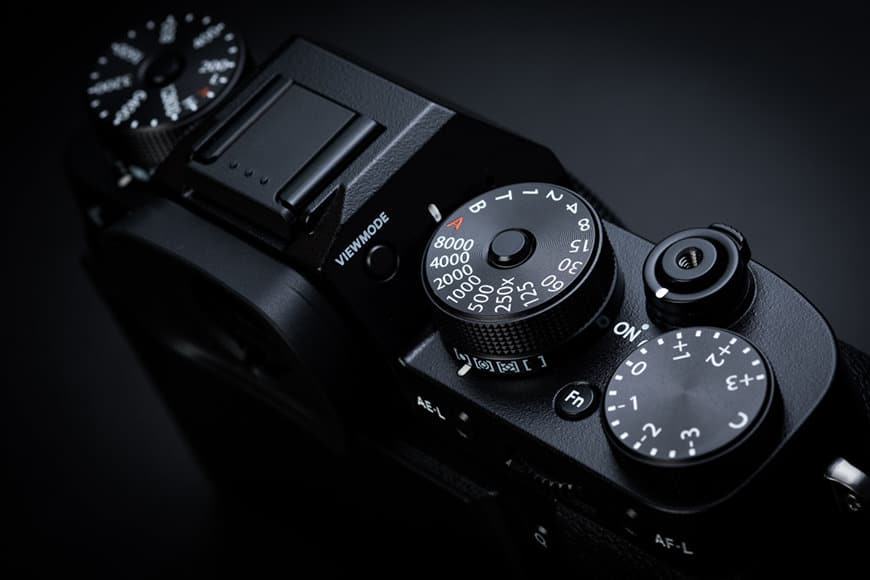
The right side dial still accommodates the photometry functions, where as the left hand side still selects the different drive modes.
As a new thing, the movie button is no longer on the top plate, but you now have the function to the far left on the lefthand dial. Fujifilm put a function key close to where the old movie button was, but I still think they should have kept the old movie button and labeled it as an Fn2.
The back of the camera now has the focus point joystick, just like on the X-Pro2. This means that the focus assist button is removed, and the Q button is moved to its place.

Instead you just press the scroll wheel like on the X-Pro2 when you want the focus assist function. Buttons have been raised slightly, so they’re easier to find by the touch. They should be raised even further imho.
The thumb grip on the Fujifilm X-T2 is more pointy and less curved. It has been moved further to the right. This new placement works great for my hands.

The SD card door, which now covers a dual SD slot, has been redesigned, and now requires you to depress a little hinge. It’s very sturdy. No “bendgate” here. Same with the hatch to the left hand side. No wiggly wiggly! It covers a remote jack, a mini HDMI port, a USB port and a mic jack.
The standard eyecup is now much improved. For a glasses wearer like myself, it’s perfect. It’s almost the same as the extended eye cup for the Fujifilm X-T1. I like this change a lot!
The screen is now a 3-axis tilt screen, meaning that in addition to landscape tilt, you can also do horizontal tilt. You can also combine the two, for weird angle stuff. The LCD panel is a 3 inch, 1040K dot display.

Fujifilm made the Fuji X-T2 slightly larger than the X-T1, but it’s such a small difference that you have to hold them both side by side to even tell the difference. It’s very minute.
2. Functions
The innards of the Fuji X-T2 are the same as the X-Pro2. A 24.3mp X-Trans III sensor and an X Processor Pro handles operations.
It has incredible dynamic range, and native ISO goes from ISO200-12800, and extended ISO range from ISO100-ISO51200. Also as RAW files.
With the X-Processor Pro comes the ability to use the Acros® film simulation, and the grain control. Here’s what the X-Pro2 does with noise control in Acros as an example.
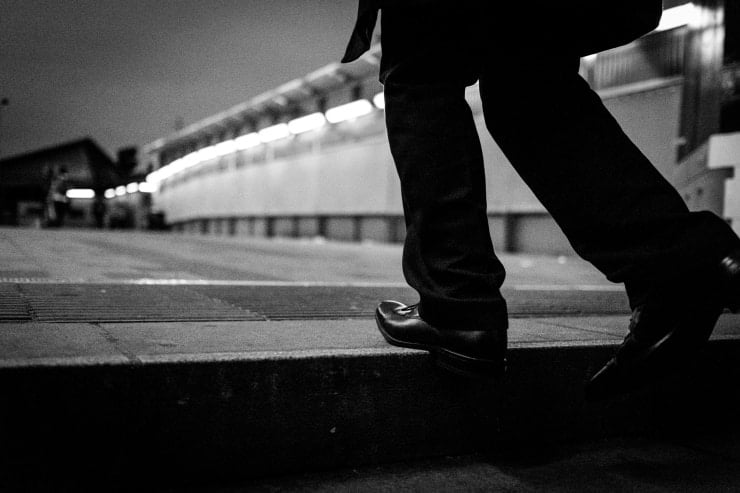
The Electronic View Finder (EVF)
One of the things that Fujifilm improved upon with the Fuji X-T2 is the already brilliant EVF of the X-T1.
The new EVF has a refresh rate of 60fps in normal mode and a staggering 100fps in boost mode!! In the 100fps setting it is incredibly fluid, with hardly any lag.
The screen is a 2.36 million dot OLED, with added brightness, and the framerate doesn’t drop when used in the dark. The EVF is truly outstanding. It’s still a 0.77x magnification.
A thing that is often talked about in regards to the EVF is the blackout period between shots. This has really been improved as well. Fujifilm doesn’t specify a number, but states that it’s below half of that in the X-T1.
All I can say from my testing, especially in motorsports, is that the blackout is virtually nonexistent. It surely poses a non-issue for capturing fast paced action sequences.
Boost Mode
Fujifilm added a new boost mode to the Fujifilm X-T2. It uses more battery but in return cranks up all the cool speed functions.
The function is a bit differentiated between using the camera with- or without the new Vertical Power Booster Grip (VPB-XT2).
What you get in the boost mode is the 100fps EVF refresh rate and continuous shooting up to 8fps with the mechanical shutter, and 14 fps with the electronic shutter.
With the Vertical Power Booster Grip attached you get 11 fps with the mechanical shutter.

Fuji X-T2 with Grip attached
Now trust me when I tell you this. The burst mode on the Fuji X-T2 is INSANE!
The speed you get from the camera when in boost mode is right in DLSR territory! Combine the fast fps with the new improved AF, and you will get close to zero misses even when taking pictures of fast moving subjects.
It’s not only fast, but it’s also very precise.

The new drive mode enables you to choose between 3-, 4- and 5 fps in C-L mode, and depending on boostmode, battery grip, shutter type it will enable 8-, 11-, and 14 fps in C-H mode.
This brings me to the AF system.
The Auto Focus
While the X-Pro2 certainly upped things in this department, the Fuji X-T2 takes it even further. You now have up to 325 autofocusing points, where 49 of them are PDAF points. It’s roughly 40% of the sensor area that is phase detection enabled.
Autofocus is very fast and very precise. I said it back in my X-Pro2 review, and I’ll say it again. The AF of Fujifilm cameras is no longer a showstopper. It’s precise and fast.
The new algorithms in the Fuji X-T2 allows for even better usage of the processing power, and results in greatly enhanced predictive AF.
The Autofocus of this camera is downright incredible.
The AF-C mode now has different profiles with tunings in three basic parameters:
- Tracking sensitivity – sets how sensitive the camera is to tracking and locking on to the moving subject.
- Speed tracking sensitivity – switches between sensitivity of decelerating/accelerating subjects and steady moving subjects.
- Zone area switching – enables the system to either follow or ignore appearing subjects in the frame where there’s already a subject being focused on.
It comes with 5 presets for different purposes, and a customisable profile, where you can make your own adjustments to the three parameters.

“Light bender” – Dúné at Nibe Festival 2016. The new drive mode on the Fuji X-T2 is perfect for erratic moving stage artists.
Flash
Now, I’m not a studio photographer, but I do use strobes a lot for my product photography as well as my portraiture work. Both on-location and indoors.
Until recently the flash offering from Fujifilm has been close to non-existant, but since announcing the Fuji EF-X500 flash unit, they have really done some work to the overall flash interface in the Fuji X-T2.
It now feels like a mature system! The menus have been completely redesigned to give you a much clearer representation of what you have going on with your lighting.
I didn’t have a chance to test out the EF-X500 unit, so I have been trying out the improvements in either manual mode with my Cactus V5 wireless flash triggers and my Nissin i40 flash for Fuji’s or with the complimentary fill flash unit EF-X8.

Kristian and Tommy of Relic Motorcycles. A simple 2-light off-camera setup with two Nissin i40’s
You have TTL and TTL slow sync, both options with a choice of 1st and 2nd curtain sync. Just like always…..but now here’s the kicker… you can FINALLY have 2nd curtain sync when using flashes in manual mode on the Fuji X-T2!
Movie Mode
The big news with the movie function is that the Fuji X-T2 is the first camera from Fujifilm capable of recording in 4K resolution. It does so, in 24p, 25p or 30p.
The optional accessory powergrip has headphones jack out so you can listen to the sound whilst recording, and the added battery life from the grip will allow you to record up to 30minutes of 4K video.

It does clean HDMI output for 4K video recording, and offers the “F-Log” log-gamma option. AKA it does some fancy tricks with the videofile in a fancy way.
I tried the video function. It looks good. I’m NOT a videographer. I don’t do video AT ALL. So if this is your main interest, you might want to read another review. – And that’s just about all I have to say about the movie part. I did make a small sample clip, that you can view below.
I used a Leica Summilux 50mm f/1.4 ASPH for this small sample clip. I used the Acros film simulation and edited it in iMovie. [If you’re interested in specific lenses for this camera, check these Fuji XT2 lenses.]
I have been told that you can see autoexposure and aperture changes. What can I say? I’m not a video guy.
3. Image Quality
As I mentioned before, the innards of the Fuji X-T2 are the same as with the X-Pro2. You get 24.3 MP files with a resolution of 6000x4000px.
Dynamic range in this new sensor is very good, and the flexibility in post processing is quite marvellous.
I have been shooting the X-Pro2 since November 2015, and now the X-T2 since April. I have gotten quite familiar with the sensor and its output by now.

The Dyrhólaey lighthouse in Iceland. Great colors, great dynamic range. That’s the X-Trans III
Even though a lot can be recovered, you still have to watch your highlights on this sensor. Rather you underexpose a bit, and pull back the shadows.
It’s an ISO-less sensor, so you can dial in exposure in the field, or you can do it after the fact when doing post-processing. It’s up to you. Your noise levels will not differ.
A lot of articles have been written on this subject, so I won’t add further to that discussion.
Usage
Now, as I mentioned in the beginning of this write-up I really wanted to test the Fuji X-T2 in different scenarios that would fit the bill of different types of photographers. During the last 3 months I have carried and used the X-T2 everywhere.
Landscape/nature photography with the Fuji X-T2
Just a week after receiving the Fuji X-T2 test unit, I had a trip planned to Iceland with some fellow Danish Fujifilm photographers.
I thought it would be a golden opportunity to test out the camera right away with harsh weather and beautiful sceneries requiring the absolute best in dynamic range and weather sealing.

The trip was an absolute success. My travelling companions must have figured me as a complete manic, since I always leapt out the tour bus first.
I only did it so I could set up the Fuji X-T2, take the shots, and put it back in the bag before anyone noticed.

Weather sealing sure came in handy. The weather in Iceland is everchanging. Ranging from -2 degrees celcius to +14 degrees within an hour is nothing unusual.
The weather sealing on the X-T2 just works. I put it within 3 feet of waterfalls, into misty falloffs, as well as accidentally dropping it into a small puddle. No issues whatsoever!

The new portrait oriented tilt mode of the LCD screen is fantastic for tripod usage when doing vertical landscape shots. It really came in handy in so many situations!
The image quality is fantastic. I can pull details from shadows, retain highlights and get incredible shots of the rapidly changing lighting conditions. It really is quite something!
Portrait/Commerical photography with the Fuji X-T2
During the past year I have developed a great relationship with local Danish motorcycle builders “Relic motorcycles”. They build bratstyle caferacers from old Hondas, BMW’s etc.

We had been having some talks for a while about doing a proper session where I could photograph some of their bikes, their clothing line as well as general portraiture images for their upcoming website.

We ended up using the area around Aarhus harbour. For the driving shots I was hanging out the trunk of my family wagon, while staying as close to the asphalt as possible.
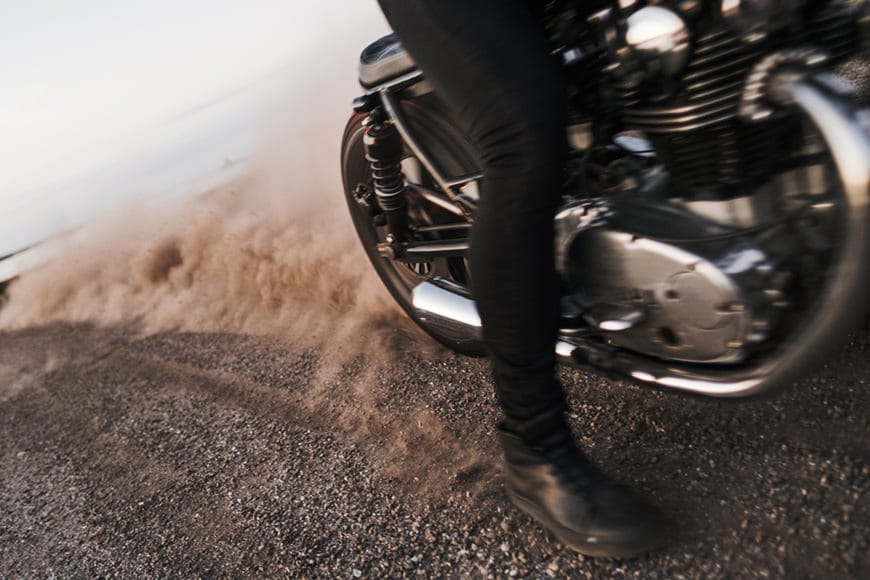
For night time images of the bikes I used lightpainting techniques, while exposing at 30s on a tripod.

Motorsports photography with the Fuji X-T2
I was fortunate enough to get an accredited spot as a photographer at the annual Classic Car Race Aarhus back in June.
The test version of Fuji X-T2 had just been updated with the new firmware containing the new enhanced Autofocus and drive settings. So it was the perfect place to test out the highspeed, high performance aspects of the camera.
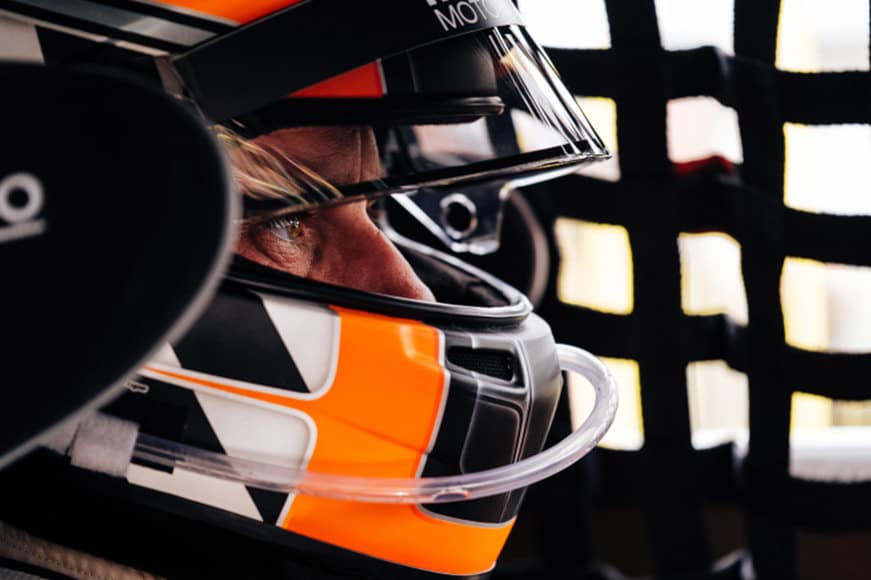
Off I went with the Fuji X-T2, Powergrip, Batteries galore, some of the best Fuji lenses:
Fuji XF 10-24mm f/4
Fuji XF 50-140mm f/2.8
Fuji XF 16mm f/1.4
Fuji XF 23mm f/1.4
Fuji XF 35mm f/1.4
and the Fuji XF 90mm f/2.
All the Fuji lenses plus cameras fit snug into my shoulder bag. No huge DSLRs here. The weight was perfect!
After 10 hours of constant walking, standing and shooting I didn’t even feel tired in my shoulders and back. THAT’S what mirrorless is all about!

The Fuji X-T2 is fast! It’s made for this kind of shooting. Racing cars going directly towards me at 200+ km/h was easily captured in burst mode with focus being locked on the car throughout the series.
The AF didn’t fail once. It just locked on, and STAYED on.
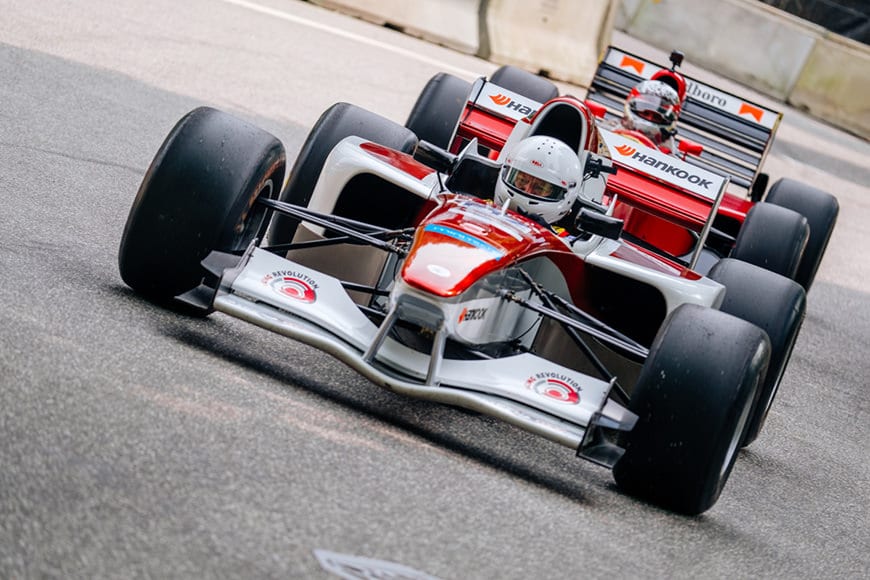
The extremely short blackout time makes it incredibly fluid to shoot fast paced scenes.
I used the AF-C type 3 function for accelerating/decelerating subjects while in Zone focus mode, switching between bursts of 11 and bursts of 3-5. It just works!

For panning shots I used manual focusing, set the aperture to A and shot at 1/15th to 1/60th.

I can say with absolute certainty that with the hit rate I got from this event I can’t imagine a DSLR in my hands could be easier, or get me better results.
Fujifilm has really stepped up to the plate with the AF on the Fuji X-T2.
Wedding photography with the Fuji X-T2
I attended a wedding of some of our very good friends, and even though I wasn’t the primary wedding photographer, I couldn’t help but bring my gear along.

For the documentary type of wedding photography that I usually do, the capturing of the fast fleeting moments is ever important.

Having your camera fail in locking focus and being slow just makes your life as a wedding photographer a lot harder!
I only used the best Fuji prime lenses for this event:
Fuji XF 23mm f/1.4
Fuji XF 35mm f/1.4
Fuji 56mm f/1.2

Yet again, the small formfactor of both the Fuji X-T2 and the Fuji lenses allowed me to attend as a guest and staying discreet about taking pictures.
Music/Concert photography with the Fuji X T2
Being a huge music lover, looking at concert images always brings a smile to my face. I love it when you get to see the emotional register of the artists as they perform their art.

This summer I had a great opportunity to be part of the internal photography team at the Nibe festival in Denmark. (Incredible team!!)
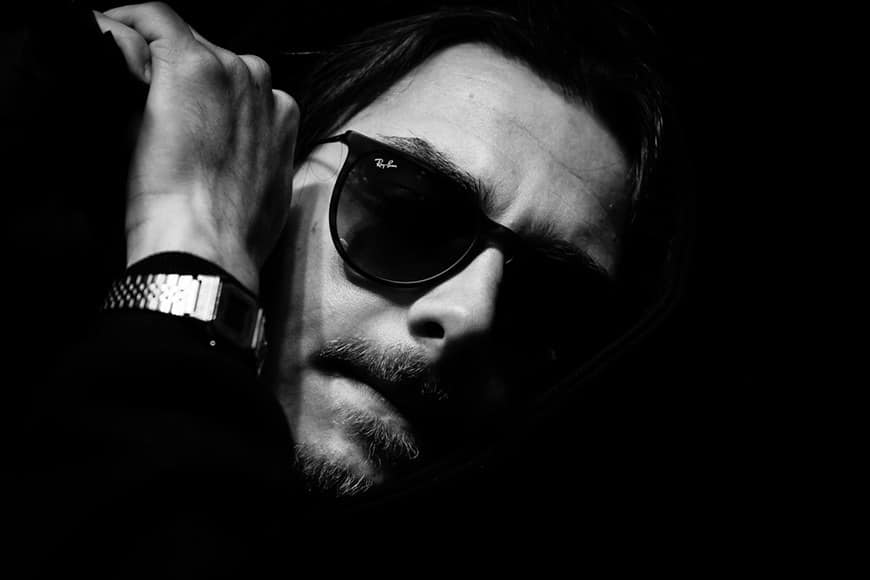
Seeing that it was my first time in the pit with proper access, I was a bit nervous as to how it would turn out.

The Fuji X-T2 did an amazing job. The fast paced sequences where the artists usually deliver great photogenic statures was easily captured with the AF-C mode set to track “Erratic moving subjects”.
Focus was spot on. I mostly I used a 3 fps CL burst.

The flipscreen was very, very handy here as well. For shooting above the edge of the stage, above the audience, ground level audience shots and so forth.

In addition, the small size really made it a breeze to carry the camera over my shoulder all day.
I really loved how it transformed from a big mean rapid fire stageshooting beast with the Fuji XF50-140mm f/2.8, to being a completely discreet audience reportage camera with the Fuji XF 35mm f/2. Incredibly versatile!

Street/Documentary photography with the Fuji X-T2
Although my main camera choice for street photography would be the rangefinder-esque Fuji X-Pro2, the X-T2 certainly brings quite a few welcome features.

For one the amazing EVF. It is like using a big screen TV for framing. I suddenly see a lot of tiny details much more clearly.

I do miss the hybrid viewfinder component, but overall the big EVF is a great thing.

The other thing that is great on the Fuji X-T2 for street photography is the tilt screen. I really use this a lot for low angle framing.

Also, when I look at the flip screen at waist level, the lack of possible eye contact makes my appearance much less noticeable. With the Fuji X-T2 I can even do this in portrait mode. It’s genius!

The new focus system is so snappy and precise, that missing fast paced moments is getting quite hard.

Conclusion of the Fuji X-T2 Review
The Fuji X-T2 is the absolute best camera Fujifilm has to offer for the working photographer.
It has great speed, great controls and great image quality. It really is a fantastic all-round camera that will work very well no matter the situation you put it in.
The Fuji X-T2 marks a very effective top-of-the-line in the X-T series. While 4K video has been added and revamped, it still feels like a still-photographer’s tool first and foremost.
If you’re a photographer making a living from your pictures, and want to try out a mirrorless camera system, the Fuji X-T2 would be a great place to start looking.
Guest review by Fujifilm X-Photographer Jonas Rask | www.jonasraskphotography.com







